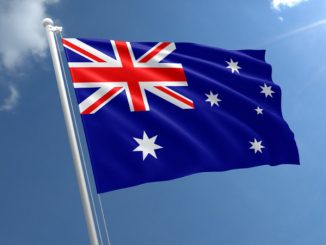
Australia, with its stunning landscapes, vibrant cities, and robust economy, is a dream destination for many professionals worldwide. One of the most common pathways to working in Australia is through a work sponsorship visa. This comprehensive guide covers everything you need to know about the Australian work sponsorship visa, including types, eligibility, the application process, benefits, and more.
What is a Work Sponsorship Visa?
A work sponsorship visa allows foreign nationals to work in Australia under the sponsorship of an Australian employer. This visa category is essential for skilled workers aiming to contribute to the Australian economy while enjoying the benefits of living in the country. It is a legal and structured pathway that helps address labor shortages in various sectors.
Definition and Purpose
A work sponsorship visa is essentially a work permit linked to an employer who has the authority to hire foreign talent. The primary purpose of this visa is to fill critical skill gaps in the Australian labor market by enabling employers to recruit skilled workers from overseas. This benefits the Australian economy by ensuring that industries have access to the necessary expertise and talent.
Who Can Apply?
Both employers and employees have specific roles and responsibilities in the application process. Employers must demonstrate a genuine need for foreign workers by showing that they cannot find suitable candidates within Australia. Employees must meet specific skill, experience, and qualification requirements to ensure they are suitable for the role.
Benefits of a Work Sponsorship Visa
The benefits of a work sponsorship visa extend beyond the ability to work in Australia. Visa holders often enjoy additional advantages such as:
- Bringing Family Members: Many visas allow the primary visa holder to bring their family members to Australia.
- Healthcare Benefits: Access to Australia’s healthcare system, which is known for its high quality.
- Pathway to Permanent Residency: Some work sponsorship visas offer a pathway to permanent residency, allowing visa holders to settle in Australia permanently.
- Career Development: Working in Australia provides opportunities for professional growth and development in a dynamic and competitive environment.
Types of Work Sponsorship Visas
Australia offers several types of work sponsorship visas, each tailored to different employment needs and residency pathways. Understanding these options is crucial for selecting the right visa based on your circumstances.
Temporary Skill Shortage (TSS) Visa (Subclass 482)
The Temporary Skill Shortage (TSS) visa addresses labor shortages by allowing employers to sponsor skilled workers from overseas. It has three streams:
- Short-Term Stream: For occupations on the Short-Term Skilled Occupation List (STSOL). This stream is valid for up to two years and can be renewed once.
- Medium-Term Stream: For occupations on the Medium and Long-Term Strategic Skills List (MLTSSL). This stream is valid for up to four years and offers a pathway to permanent residency.
- Labor Agreement Stream: For occupations under a labor agreement with the Australian government. This stream is designed for industries that have negotiated specific agreements with the government to address unique labor needs.
Employer Nomination Scheme (ENS) Visa (Subclass 186)
The Employer Nomination Scheme (ENS) visa allows skilled workers to live and work in Australia permanently. It has three streams:
- Temporary Residence Transition Stream: For TSS visa holders who have worked for their employer for three years and whose employer wishes to offer them a permanent position.
- Direct Entry Stream: For applicants who have never worked in Australia or have only worked briefly. This stream requires the applicant to have a positive skills assessment and at least three years of relevant work experience.
- Agreement Stream: For workers sponsored under a labor agreement. This stream is for unique situations where employers have negotiated specific terms with the Australian government.
Regional Sponsored Migration Scheme (RSMS) Visa (Subclass 187)
The RSMS visa is for skilled workers willing to work in regional Australia. It has similar streams to the ENS visa but focuses on promoting regional development. The streams include:
- Temporary Residence Transition Stream: For TSS visa holders who have worked for their employer in a regional area for three years.
- Direct Entry Stream: For applicants with a positive skills assessment and at least three years of relevant work experience willing to work in regional areas.
- Agreement Stream: For workers sponsored under a labor agreement specifically designed for regional Australia.
Skilled Employer Sponsored Regional (Provisional) Visa (Subclass 494)
This provisional visa allows skilled workers to live and work in designated regional areas for up to five years. It offers a pathway to permanent residency through the Skilled Regional (Permanent) visa (subclass 191) after meeting specific requirements.
Eligibility Criteria
To apply for a work sponsorship visa, both employers and employees must meet specific eligibility criteria. These criteria ensure that the visa program effectively addresses labor shortages while maintaining the integrity of the Australian labor market.
For Employers
To sponsor a worker, Australian employers must:
- Be a Legally Established and Actively Operating Business: Employers must provide evidence of their business registration and operations.
- Have a Genuine Need for a Paid Employee to Fill a Skilled Position: Employers must demonstrate that the position cannot be filled by an Australian citizen or permanent resident.
- Meet Salary and Employment Conditions: The terms and conditions of employment must comply with Australian labor laws and industry standards.
- Demonstrate a Commitment to Employing Local Labor First: Employers must show efforts to hire local candidates before seeking foreign workers.
For Employees
Employees must:
- Have the Required Skills, Qualifications, and Experience: Applicants must provide evidence of their qualifications and work experience relevant to the nominated position.
- Meet Health and Character Requirements: All applicants must undergo health examinations and police checks to ensure they meet Australia’s health and character standards.
- Have a Valid Job Offer from an Approved Australian Sponsor: Applicants must have a job offer for a position that is eligible for sponsorship under the relevant visa category.
Application Process
The application process for a work sponsorship visa involves several steps, from employer sponsorship to the final visa application. Understanding these steps is crucial for a smooth application process.
Step 1: Employer Sponsorship
The first step is for the employer to become an approved sponsor. This involves:
- Lodging a Sponsorship Application: The employer must apply to become a standard business sponsor. This application requires the employer to provide details about their business operations and financial standing.
- Approval: Once approved, the employer can nominate positions to be filled by foreign workers. The sponsorship approval is generally valid for five years.
Step 2: Nomination
After becoming an approved sponsor, the employer nominates the position to be filled by a foreign worker. This step involves:
- Submitting a Nomination Application: The employer must provide details about the position, including the job description, location, and salary. They must also explain why the position cannot be filled locally.
- Approval: The nomination must be approved before the visa application can proceed. The nomination approval ensures that the position is genuine and meets the requirements of the visa program.
Step 3: Visa Application
Once the nomination is approved, the employee can apply for the visa. This involves:
- Lodging a Visa Application: The employee must submit an online application through the Department of Home Affairs website. The application requires detailed personal information and evidence of qualifications and work experience.
- Providing Supporting Documents: Applicants must include evidence of skills, qualifications, work experience, health and character checks, and the job offer. Supporting documents should be accurate and complete to avoid delays.
- Application Fee: Applicants must pay the necessary visa application fee. The fee varies depending on the visa subclass and individual circumstances.
Processing Time and Costs
Understanding the processing time and costs involved in obtaining a work sponsorship visa is crucial for planning. Processing times can vary based on several factors, including the complexity of the application and the visa subclass.
Processing Time
The processing time for work sponsorship visas varies depending on the visa subclass and individual circumstances. Generally:
- TSS Visa: 1 to 4 months
- ENS Visa: 6 to 12 months
- RSMS Visa: 6 to 12 months
- Skilled Employer-Sponsored Regional (Provisional) Visa: 6 to 12 months
Costs
The costs associated with applying for a work sponsorship visa include:
- Sponsorship Application Fee: Paid by the employer when applying to become an approved sponsor.
- Nomination Fee: Paid by the employer for each nominated position.
- Visa Application Fee: Paid by the employee when lodging the visa application. The fee varies depending on the visa subclass and the number of applicants included in the application.
- Health Examinations and Police Checks: Costs for medical examinations and police clearance certificates, which are required for the visa application.
Common Challenges and Solutions
Applying for a work sponsorship visa can be complex, and applicants often face challenges. Here are some common challenges and solutions:
Finding a Sponsor
Challenge: Securing a job offer from an approved Australian sponsor can be difficult, especially for candidates without local connections.
Solution: Networking, online job portals, and recruitment agencies specializing in Australian job placements can help. Tailoring your resume to meet Australian standards and highlighting your skills relevant to the Australian job market can also increase your chances.
Meeting Skill and Experience Requirements
Challenge: Applicants must meet stringent skill and experience requirements, which can be a barrier for some candidates.
Solution: Obtain a skills assessment from a recognized authority to validate your qualifications and work experience. Consider gaining additional certifications or experience to strengthen your application.
Navigating the Application Process
Challenge: The application process involves multiple steps and extensive documentation, which can be overwhelming.
Solution: Engage a registered migration agent to assist with the application process. A migration agent can provide expert guidance, ensure all documents are correctly submitted, and increase the likelihood of a successful application.
Conclusion
Applying for an Australian work sponsorship visa can be a complex process, but with the right information and preparation, it becomes manageable. Understanding the different types of visas, eligibility criteria, and the application process is essential for a successful application. Whether you are an employer looking to fill a skills gap or an employee seeking new opportunities, the Australian work sponsorship visa offers a pathway to achieving your goals in one of the world’s most dynamic economies. By leveraging this visa program, skilled professionals can contribute to Australia’s growth while enjoying a high quality of life and potential pathways to permanent residency.



Leave a Reply